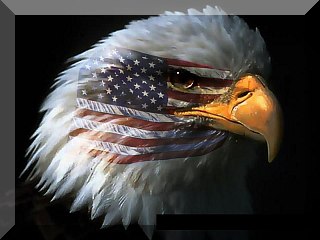






YEAR BUILT: 1907
BUILT AT: Camden (NJ)
BUILDER: New York Shipbuilding Co
APPROPRIATION: ?
CONTRACT PRICE: $90,000
SISTER VESSELS: LV 84,85,86,87
DESIGN: Steam screw; steel hull, wood pilothouse and deckhouses; 2 steel masts, wood spencer on main only; smokestack amidships
LENGTH: 135'5" (loa); BEAM: 29'0"; DRAFT: 12'9"; TONNAGE: 683 displ
PROPULSION: Original power plant: Steam - one compound reciprocating engine, 16" and 31" bores x 24" stroke, 325 IHP; 2 boilers 93" dia x i6'4" long; propeller 7'9" dia; design max speed 10 knots; also rigged for sail initially. Sometime in the mid-1930s her steam propulsion system was replaced with a (diesel direct) Washington 4-cylinder diesel engine. Two Fairbanks Morse 6-cylinder Model 36A generators and a 2-cylinder generator.
ILLUMINATING APPARATUS: Cluster of 3 oil lens lanterns raised to each masthead
FOG SIGNAL: 12" steam chime whistle; hand operated bell
CONSTRUCTION NOTES - MODIFICATIONS - EQUIPMENT CHANGES & IMPROVEMENTS:
1909: Equipped with submarine bell signal-
1920: Equipped with radio-
1924: Equipped with radiobeacon-
1927: 375mm electric lens lanterns installed in gallery at each masthead-
1933: Fog signal changed to steam diaphragm horn (17" Leslie Typhon)-
1934: Radiobeacon synchronized with fog signal for distance finding-
193?: Steam propulsion system replaced with diesel-electric-
1935: Fog signal changed to air diaphragm horn-
1945: Fitted with detection radar-
Radio and visual call sign NMGJ (1940-1960)
STATION ASSIGNMENTS:
1909-1939: Columbia River (WA)
1939-1942: Umatilla Reef (WA)
1942-1945: Examination Vessel, WWII
1945-1959: Umatilla Reef (WA)
1959-1960: Relief (West Coast)
(1942-1945: During WWII, withdrawn from Umatilla, assigned to NOWESTSEAFRON, stationed at Seattle WA and used as examination vessel; armed with one 3"/23 gun mounted forward and one "Y" gun depth charge projector on her stern. Classed as a "YN" - net tender during the period)
HISTORICAL NOTES:
1908: Having been assigned duty on the West Coast, LV 88 in company with LV 92 and 93; and three lighthouse tenders SEQUOIA, MANZANITA, and KUKUI departed in convoy from New York and made the voyage to San Francisco in 124 days-
1914: Jan 2, during SR storm after steaming ahead for 11 hours, a boarding sea stove in the pilot house sheared off steering compass, bent steering wheel shaft and carried away bridge binnacle. Also carried away ventilator and galley stack; damaged engine room skylight flooding engine room; smashed ports in after house and carried away deck stanchions; 2 crew injured by flying glass
RETIRED FROM LIGHTSHIP DUTY: 1960; AGE: 53
SUBSEQUENT DISPOSITION: Decommissioned Nov 23, 1960; sold to scrap yard Jul 25, 1962; then became floating exhibit at Columbia River Maritime Museum 1963-1979 then sold. Plans for floating restaurant failed then sold in 1982 to Claude Lacerte, converted to half brigantine BELLE BLONDE, to Quebec 1984 for charter use. Survived a hurricane in 1985 with the loss of one crewman swept overboard. The vessels then sailed back to the Caribbean where it was used for 7 day cruises around the islands. It was then sold and delivered to Japan in 1988.
COMMANDING OFFICERS: LV 88 / WAL 513
1909-1918: J Nielsen, Master
1909-1913: William A Steel, Mate
1918-?: David Ingram, Master
1918: Andrew G Anderson, Mate
1918: Gustav B Howe, Mate
1918-1919: Nils S Kroger, Mate
1919-1921: Andrew G Anderson, Mate
1925-?: Jacob Nielsen, Mate
1936-?: Leslie A Leadbetter, Master
?-1938: Robert Barber, Mate
1938-?: Henry Hobson, Mate
1959-1960: WO2 Ray Johnson, CO; CBM Stack, XO
Copyright © 2004 United States Coast Guard Lightship Sailors Association
INC. All rights reserved.
Copyrights also protected by the
Digital Millennium Copyright Act of
1998
Revised: 10/23/06.